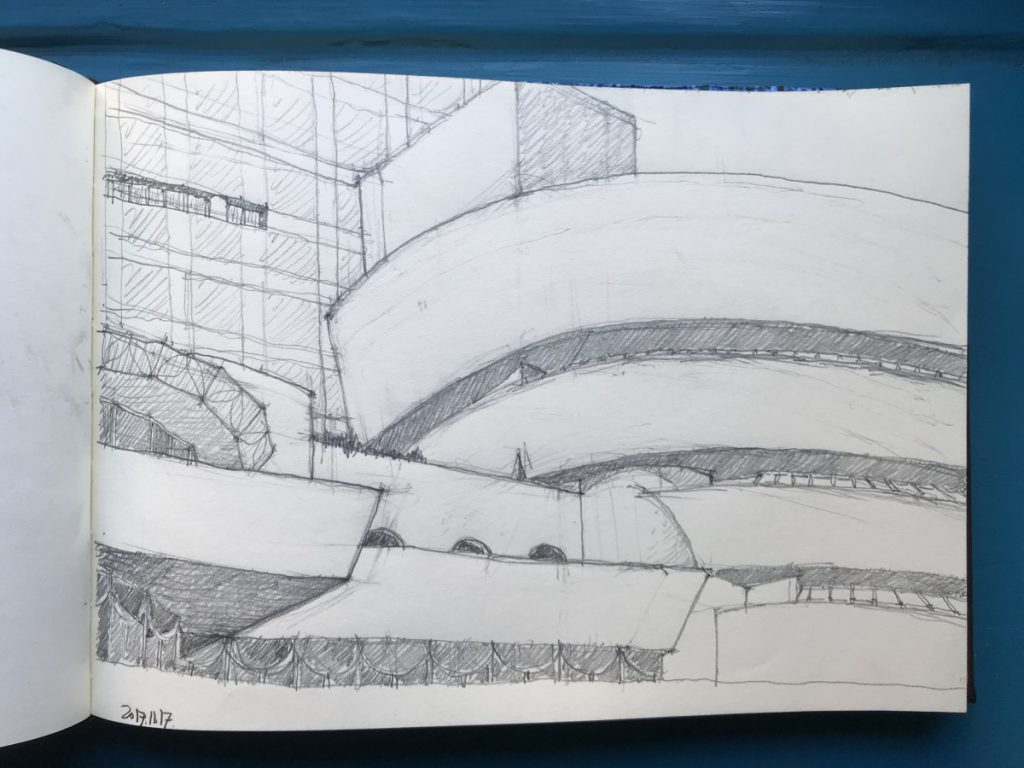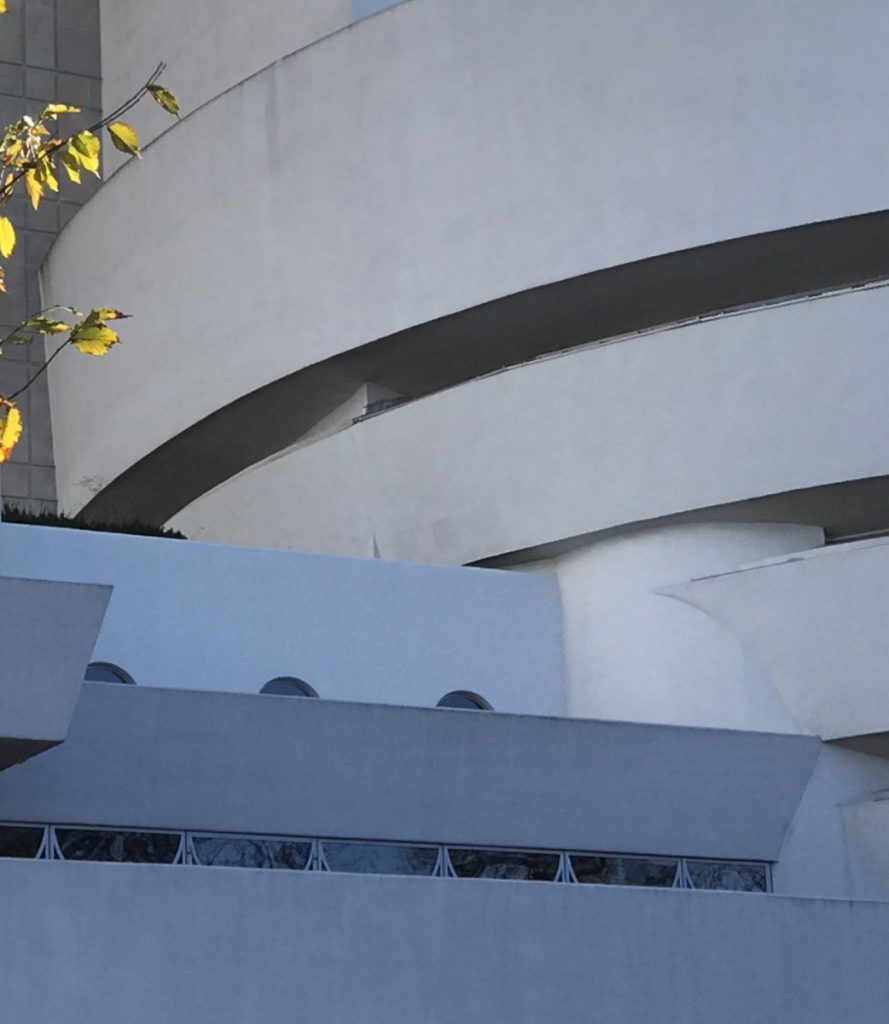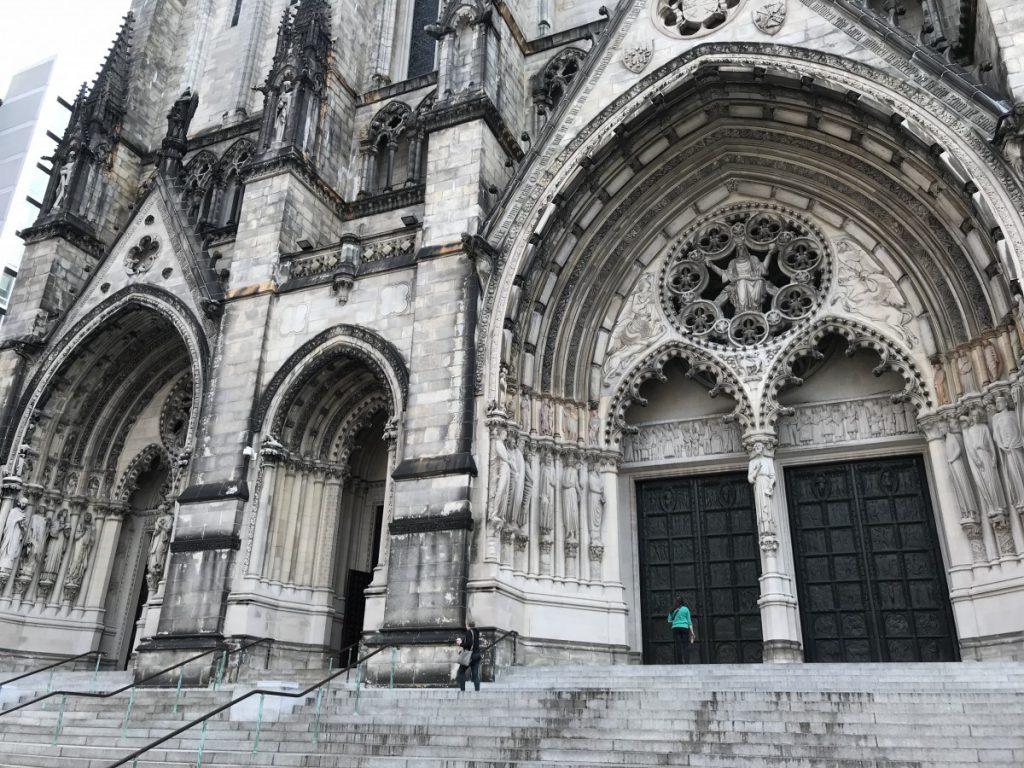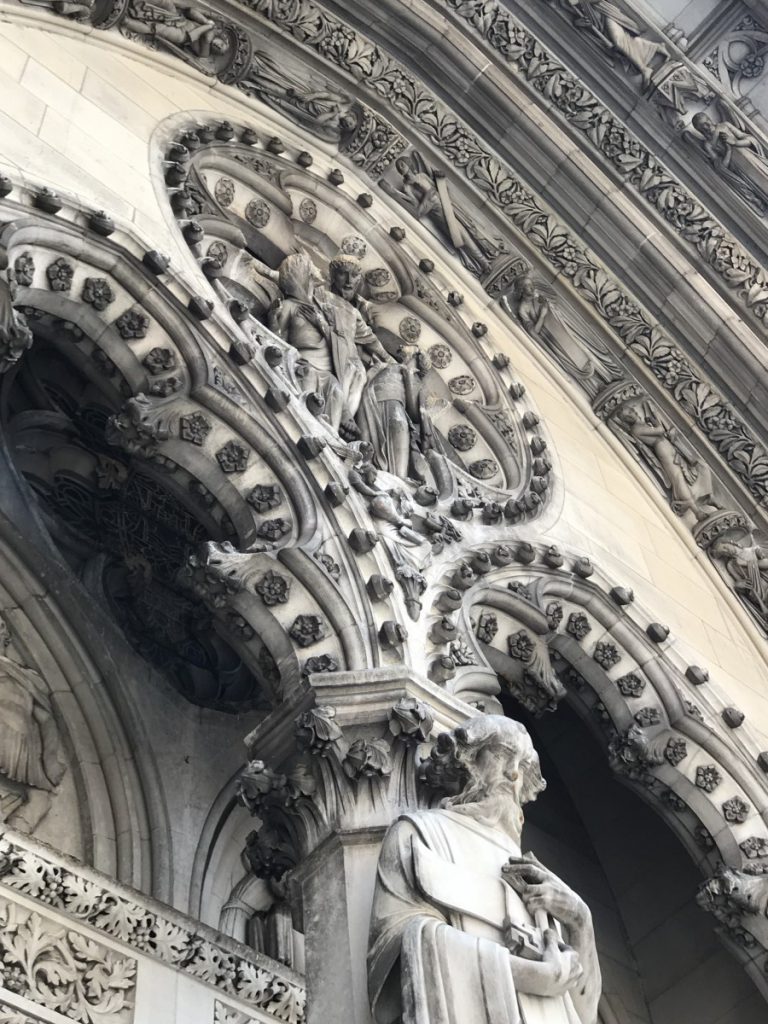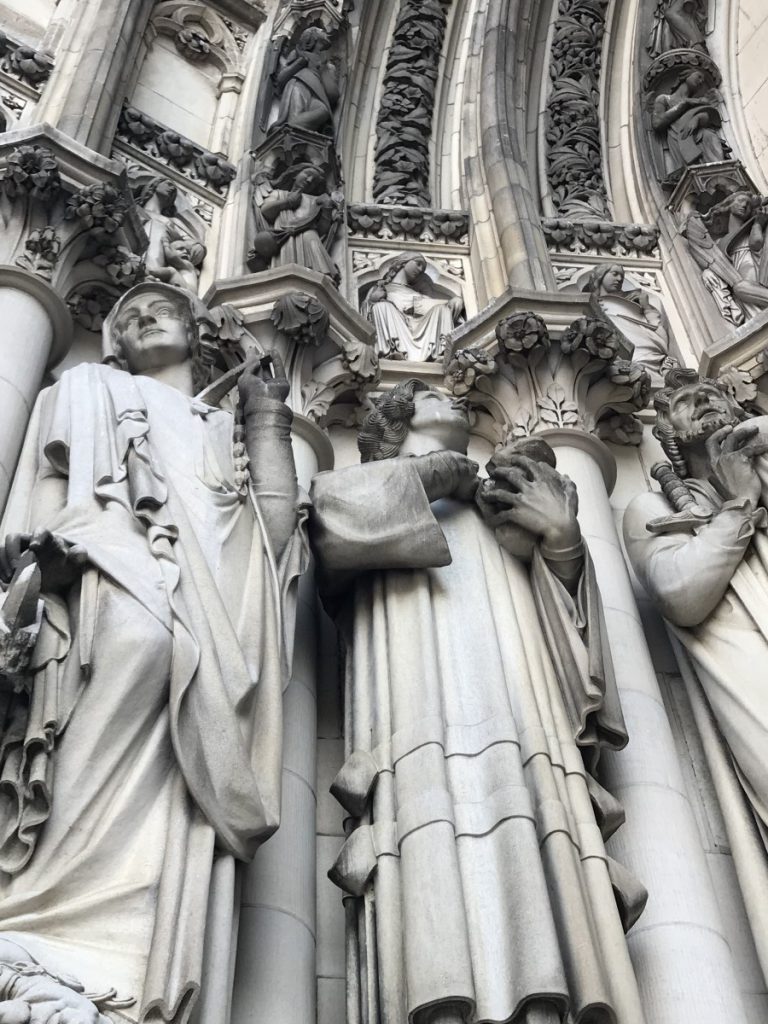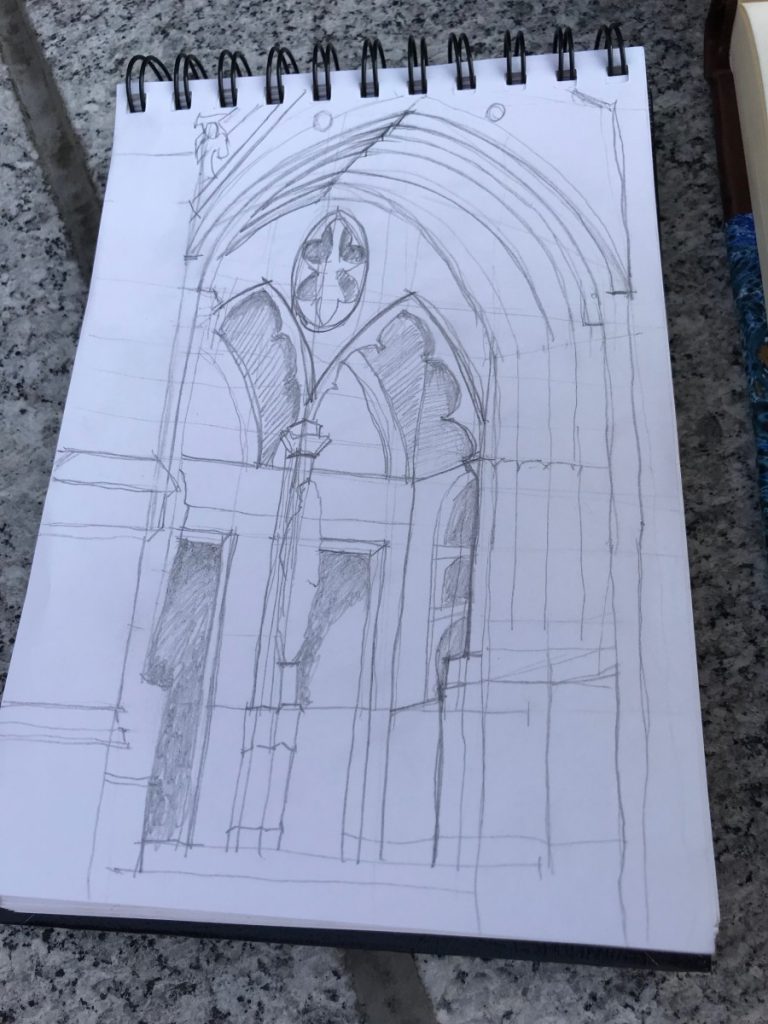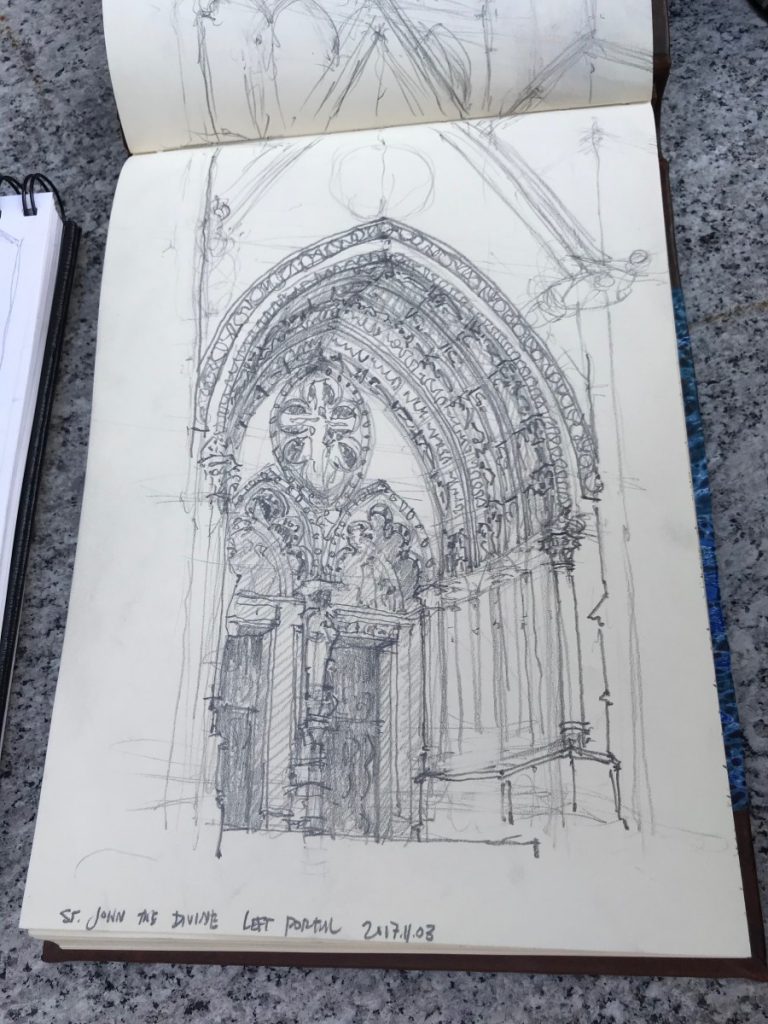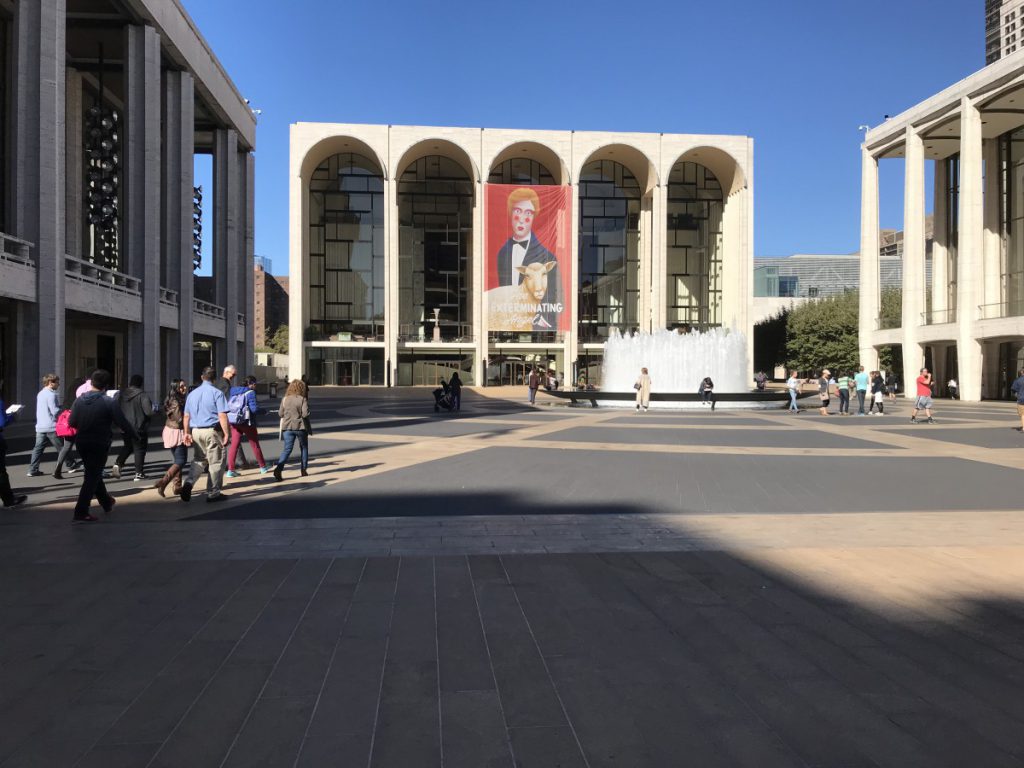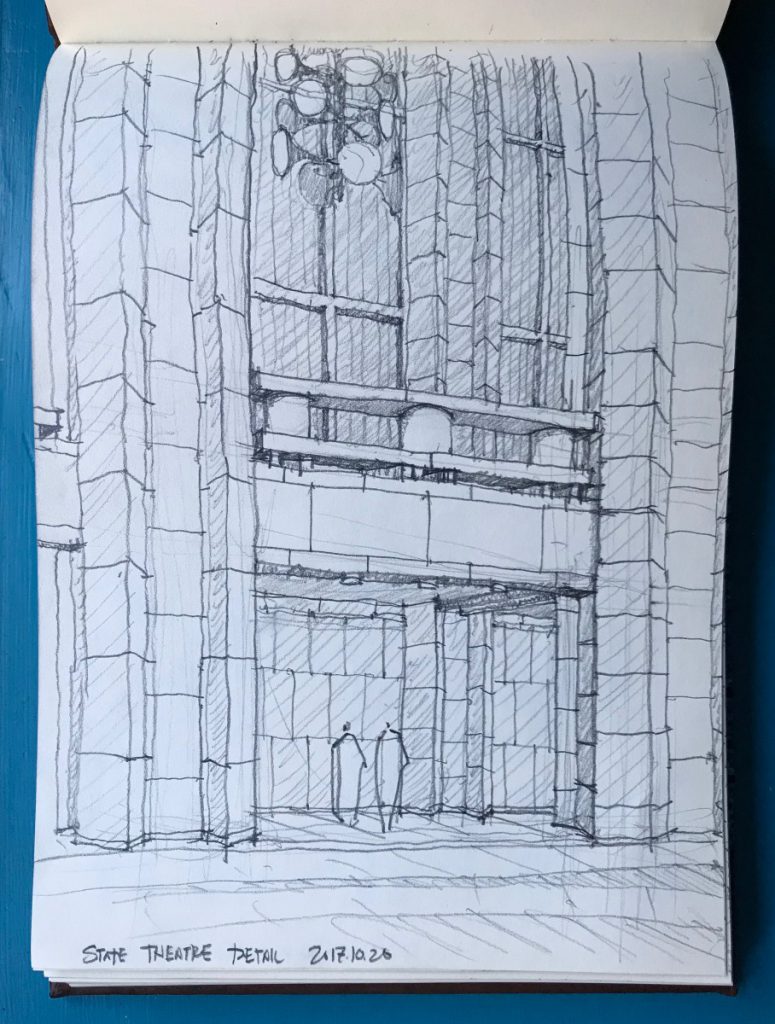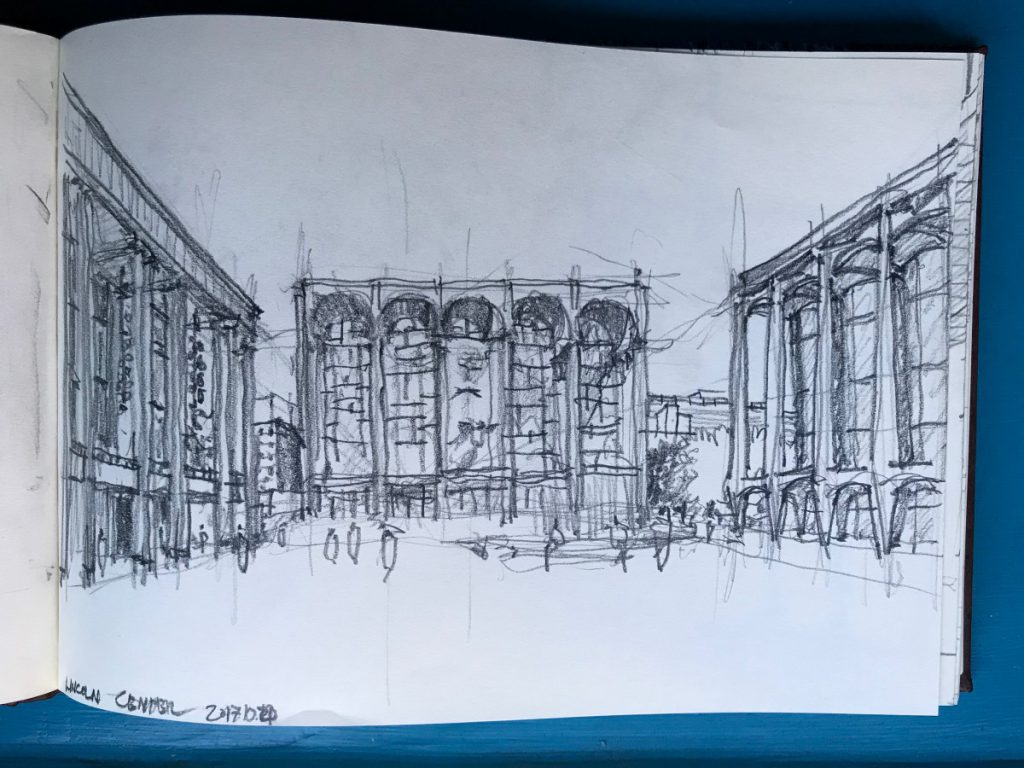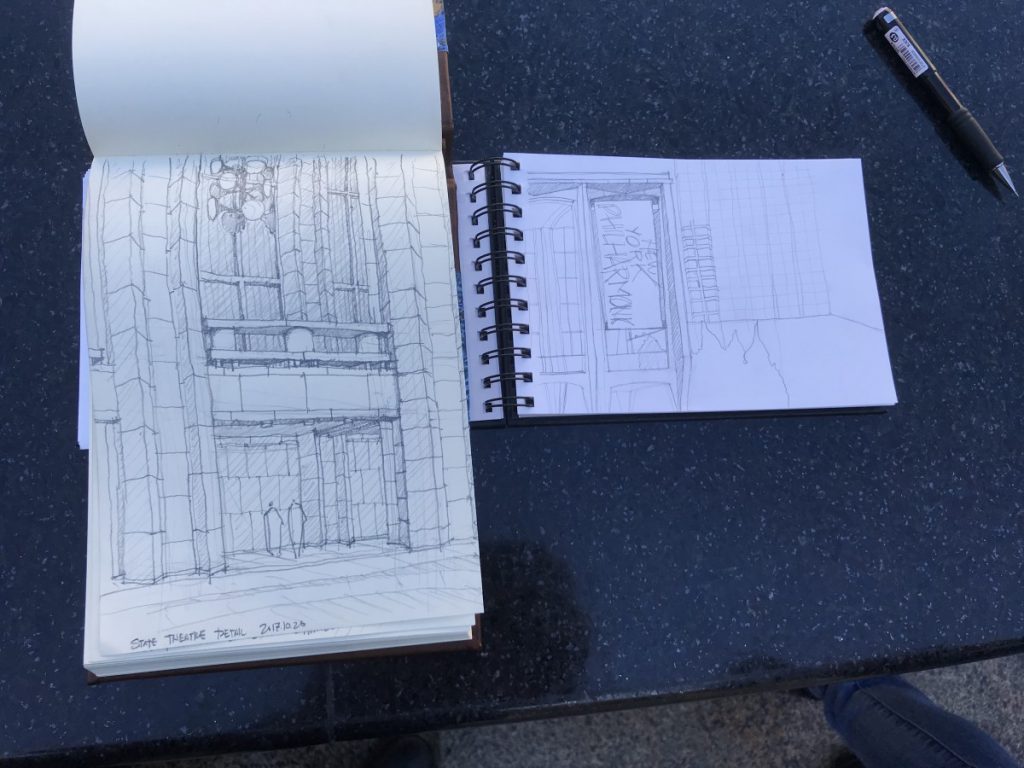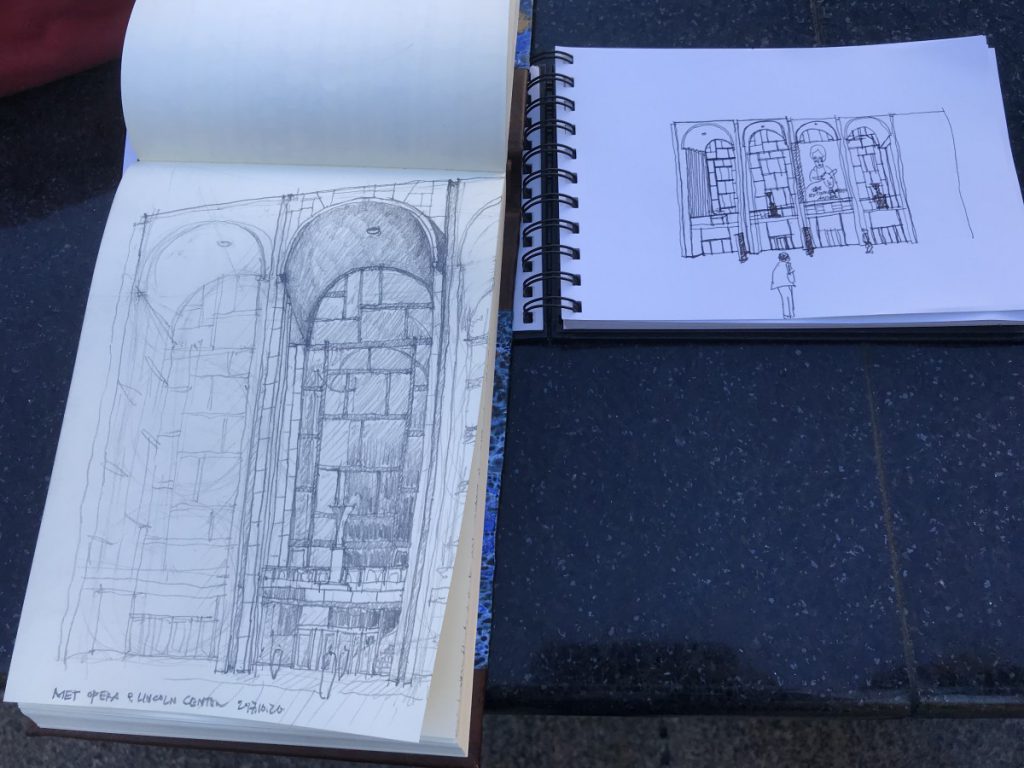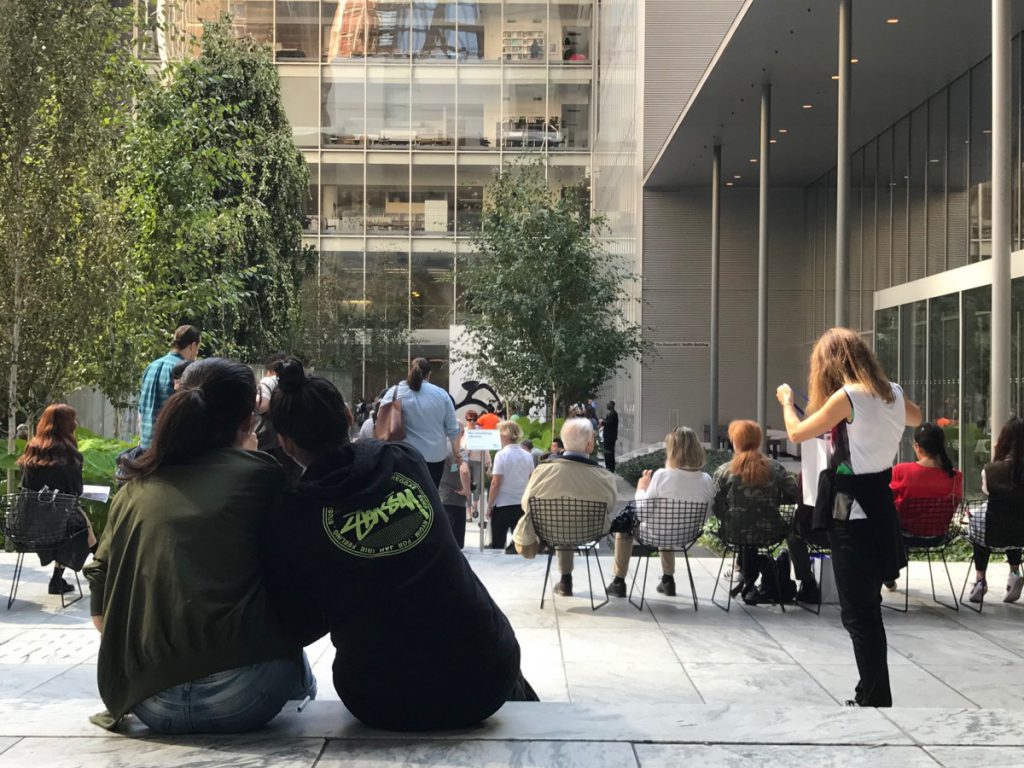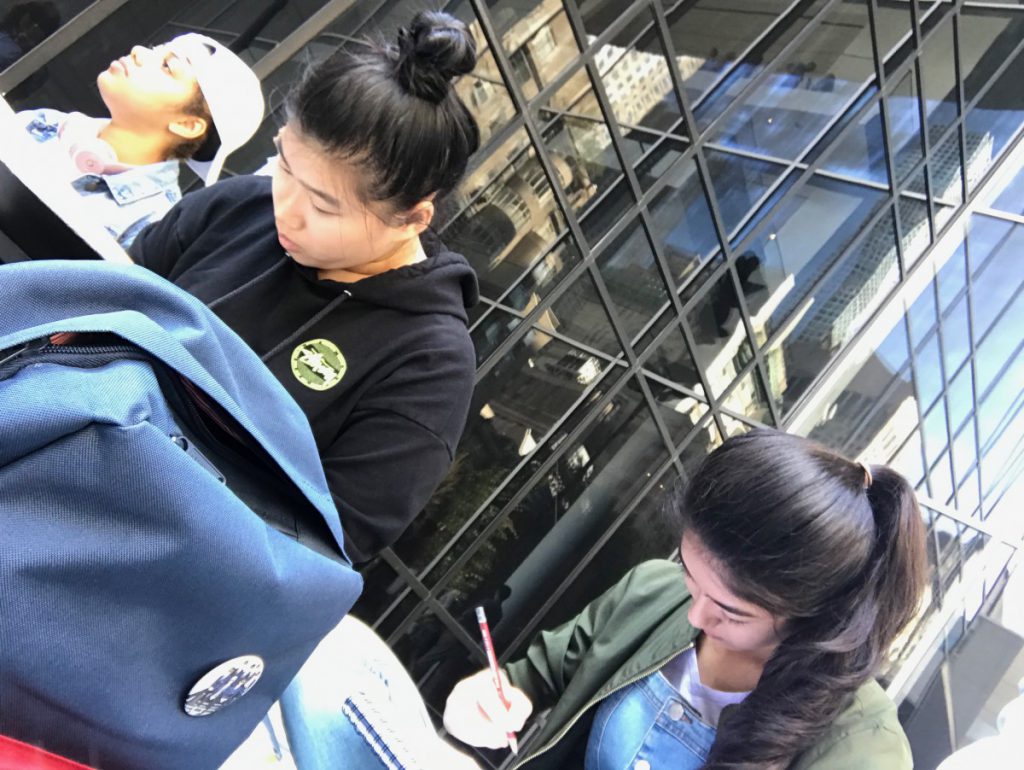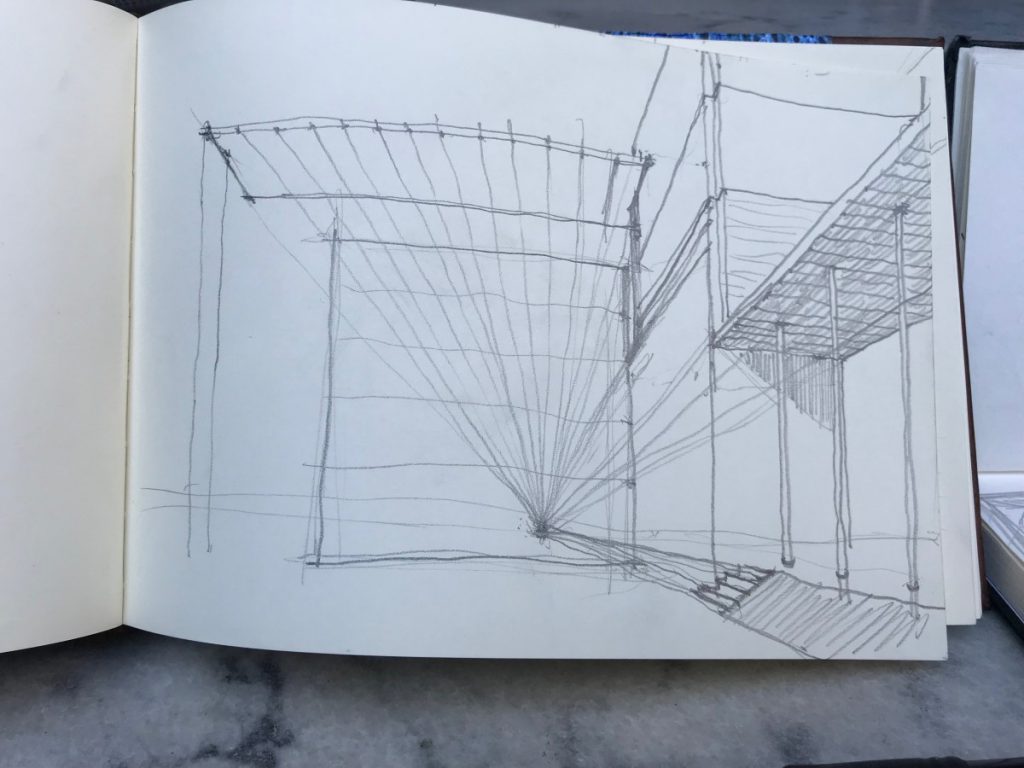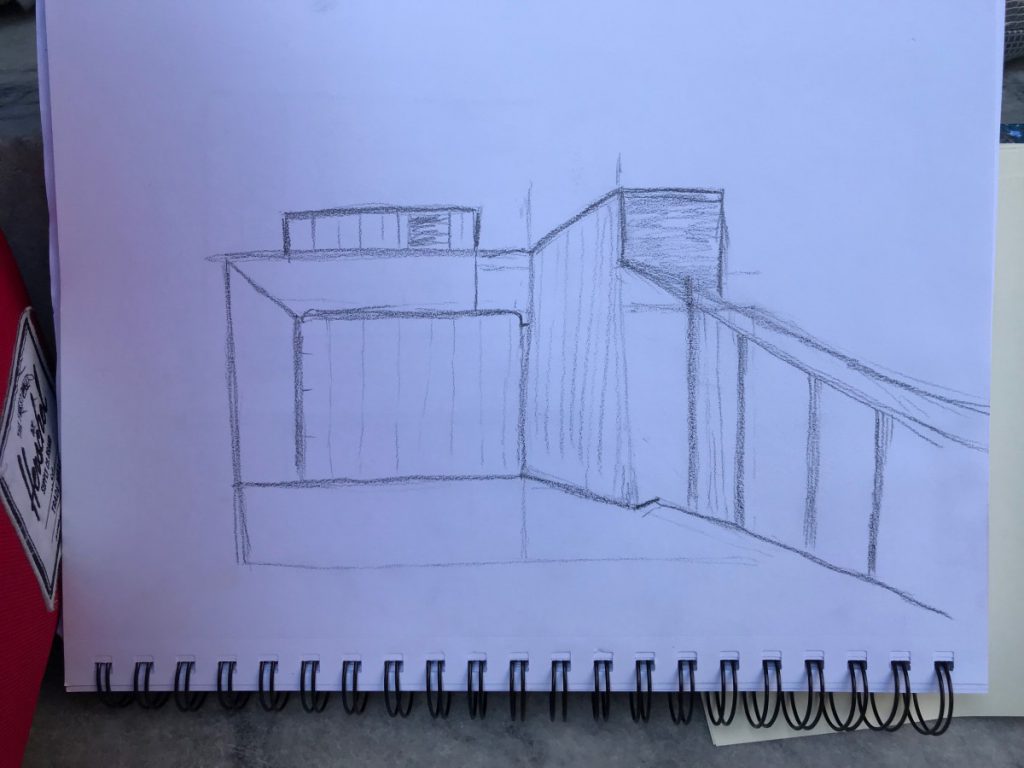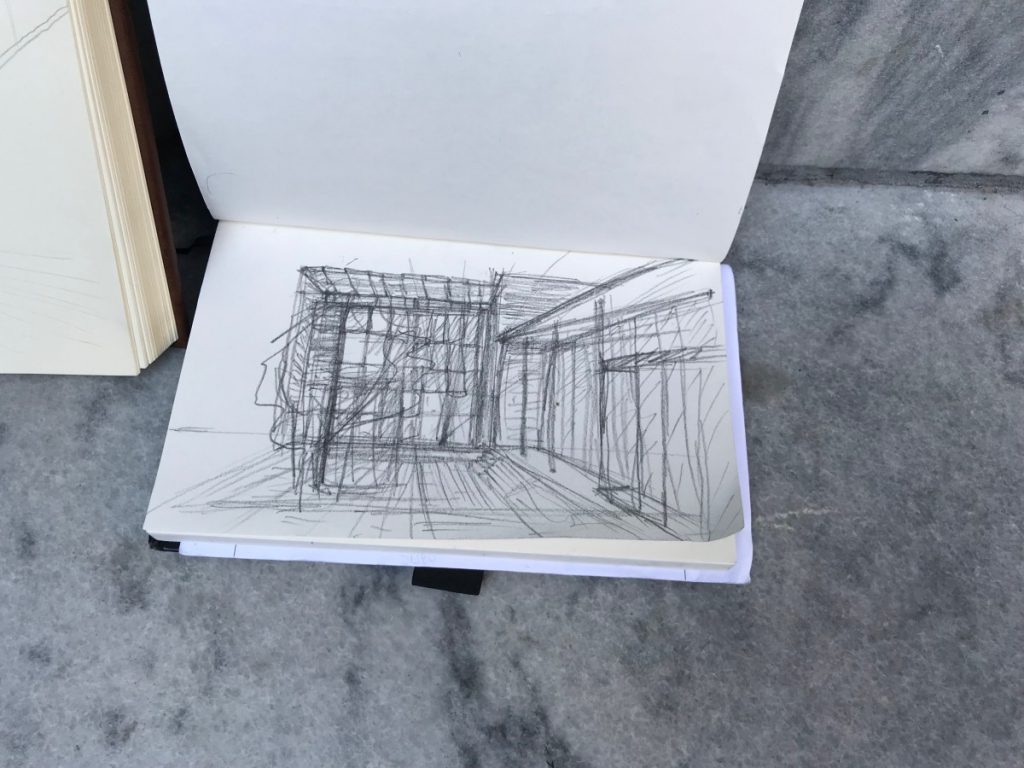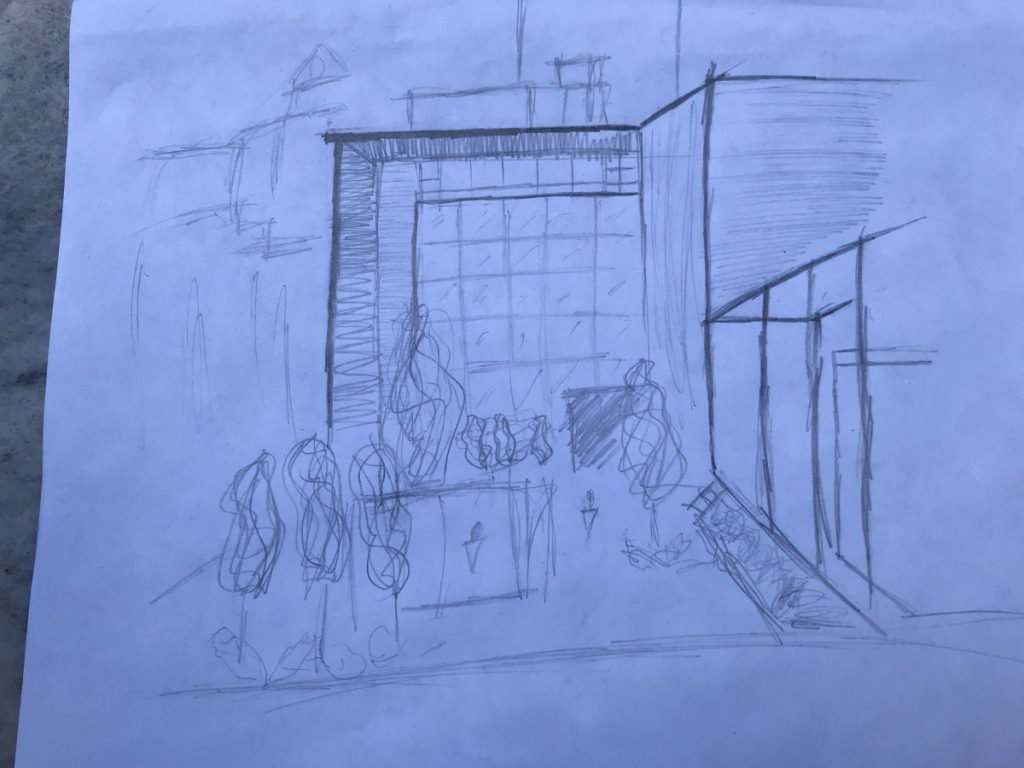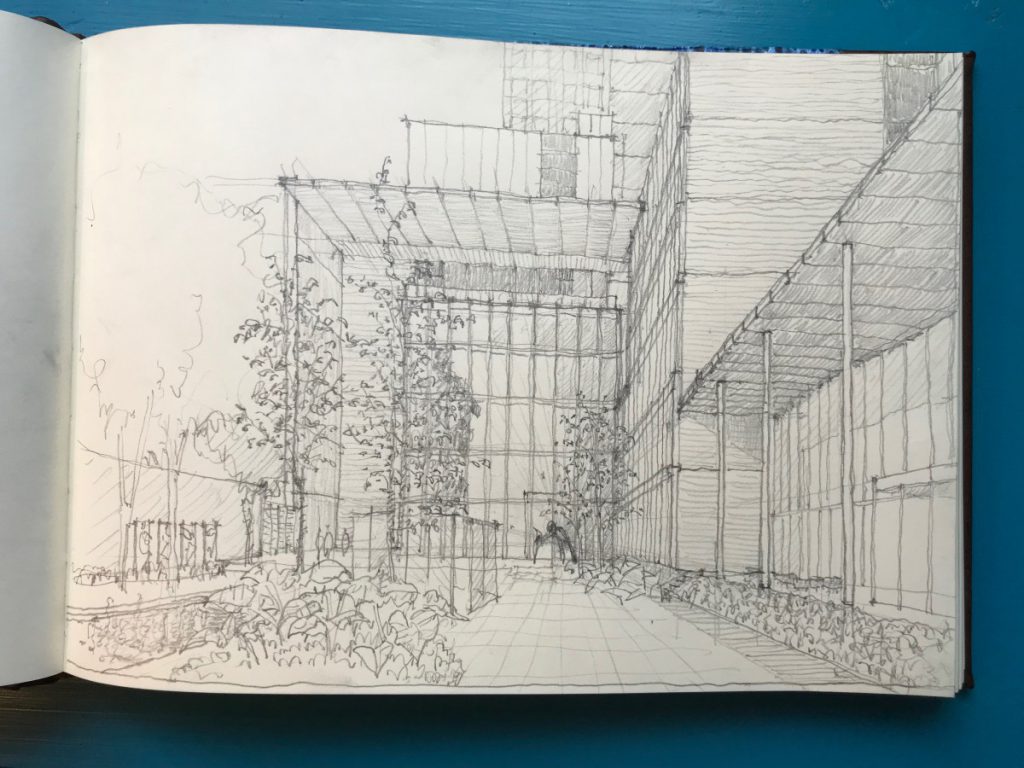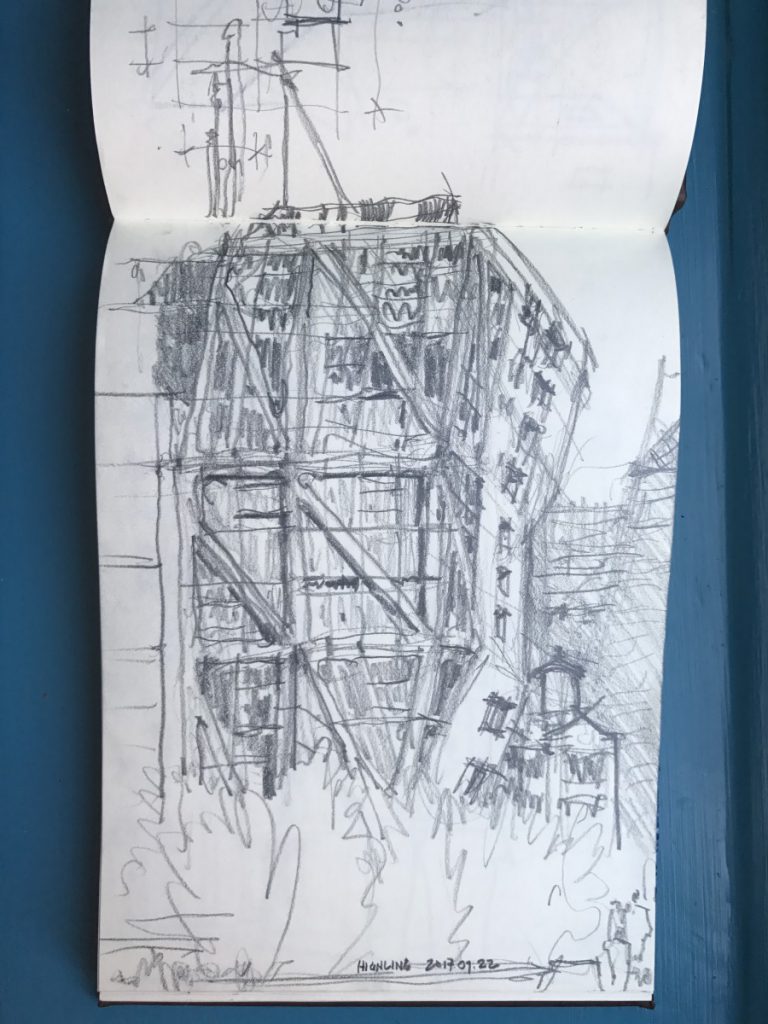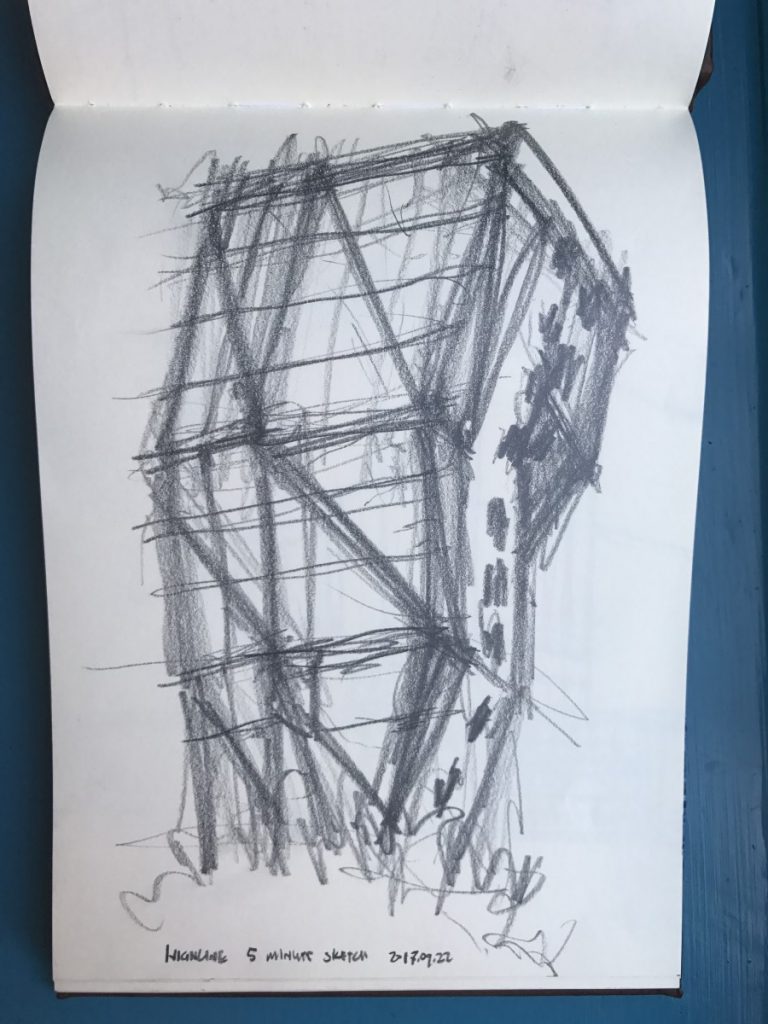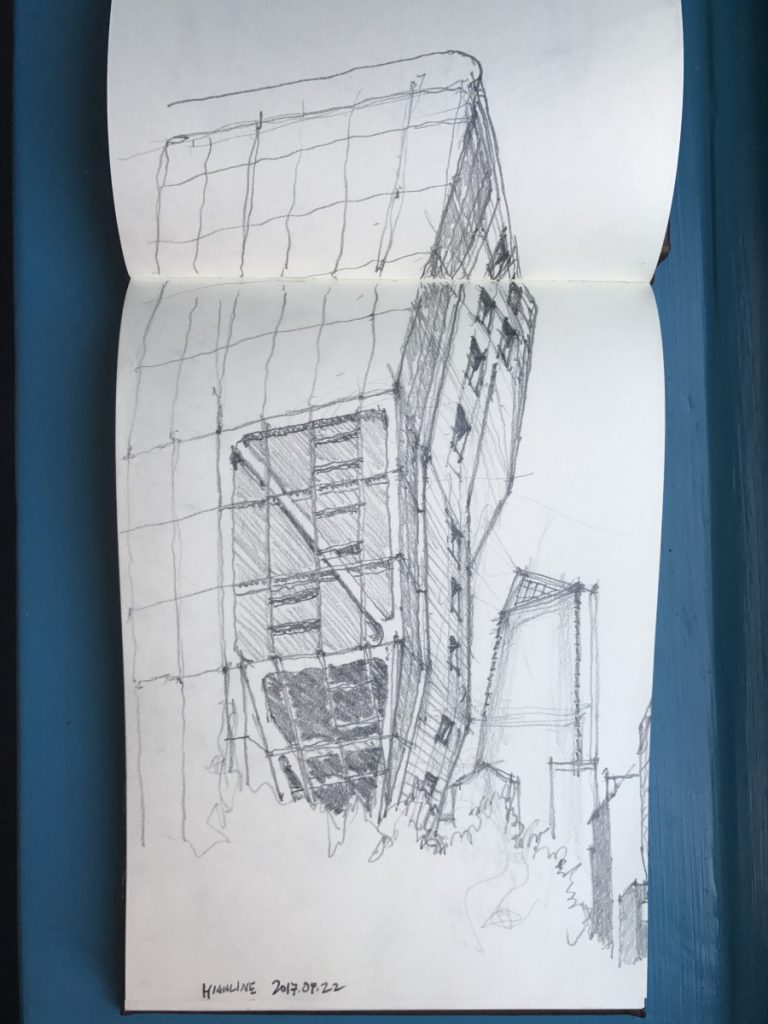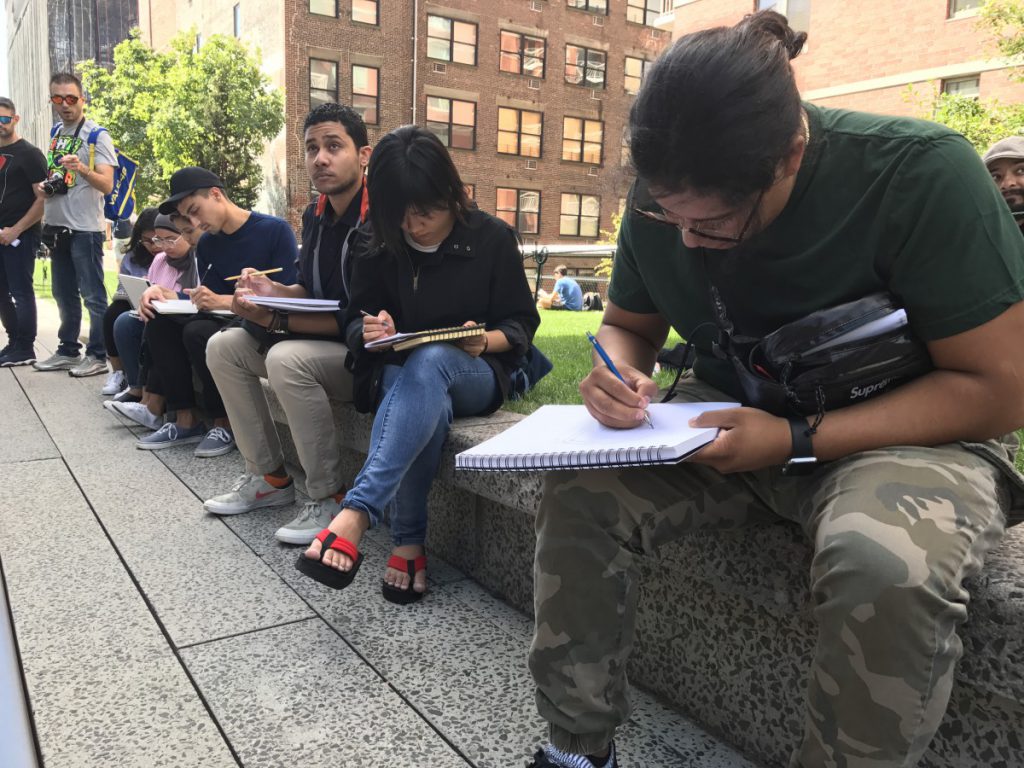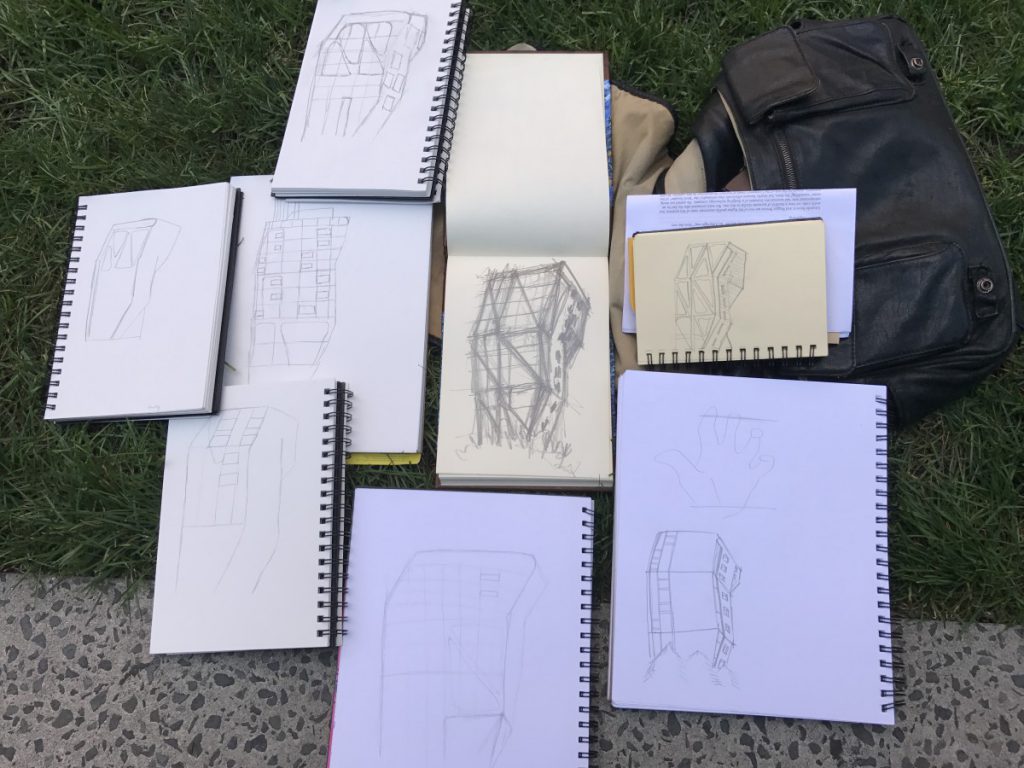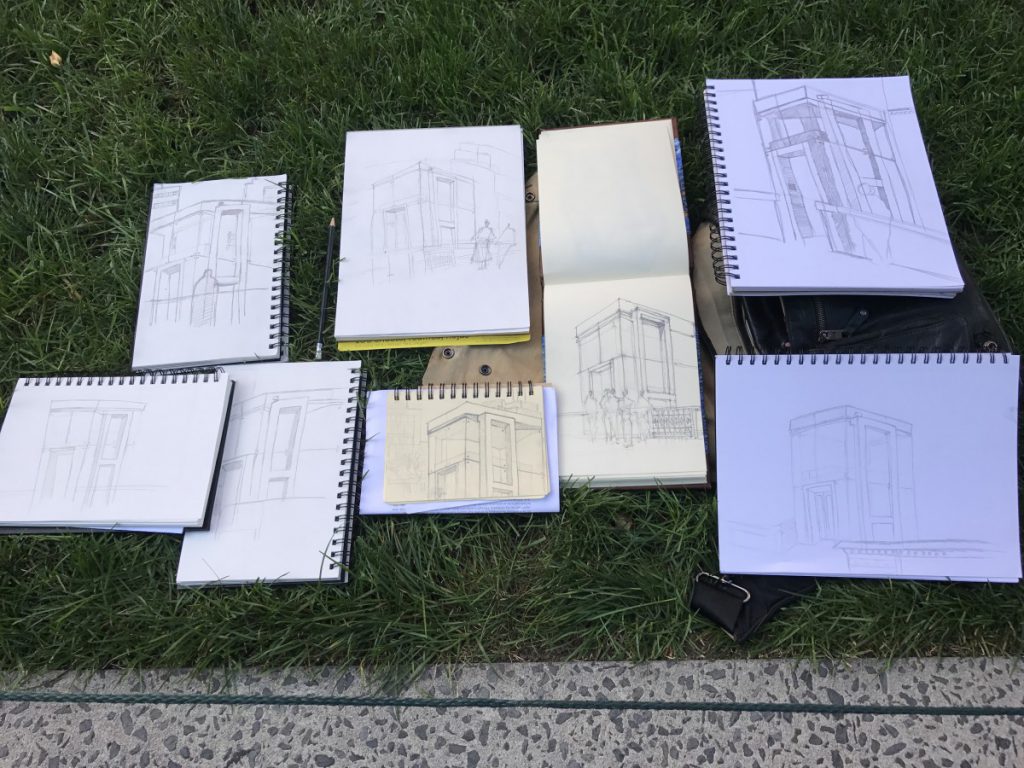The Guggenheim is a particularly challenging due to the curvature and the complexity of the multiple planes as well as the canted surfaces. The complexity does facilitate, however, the triangulation of the elements enhancing the reading of the negative spaces and proportions and geometry of their intersections. Sketching a building of this complexity offers a case study of the power of careful observation. Here I was able to observe a tiny massing detail of the rectangular core (visible above the top level of the curving mass) that protrudes from the penultimate level of the rotunda due to the combination of the decreasing radius of each level of the rotunda and the canted surface. A detail of this sort was likely not designed or anticipated but was “discovered” during construction.

